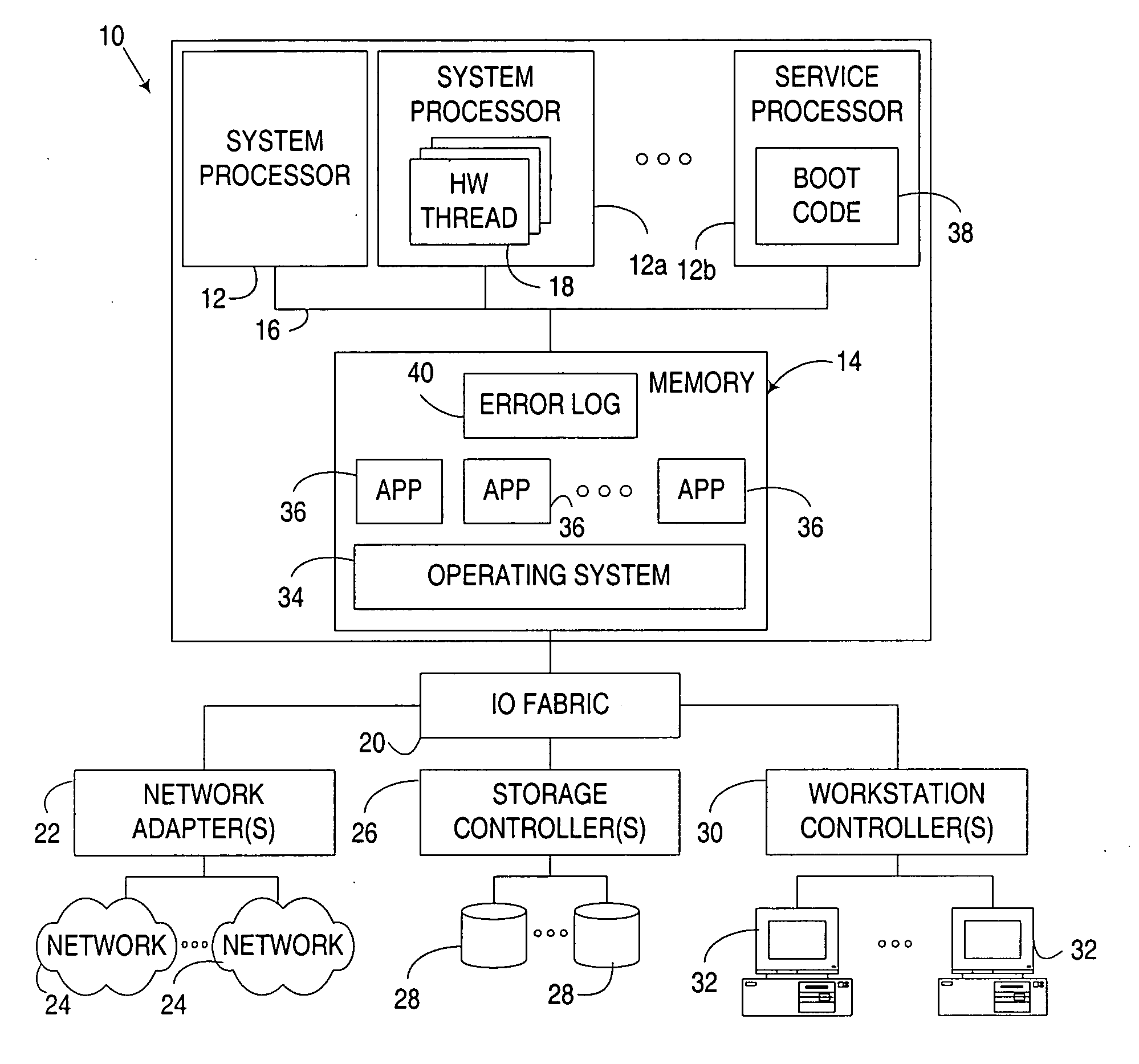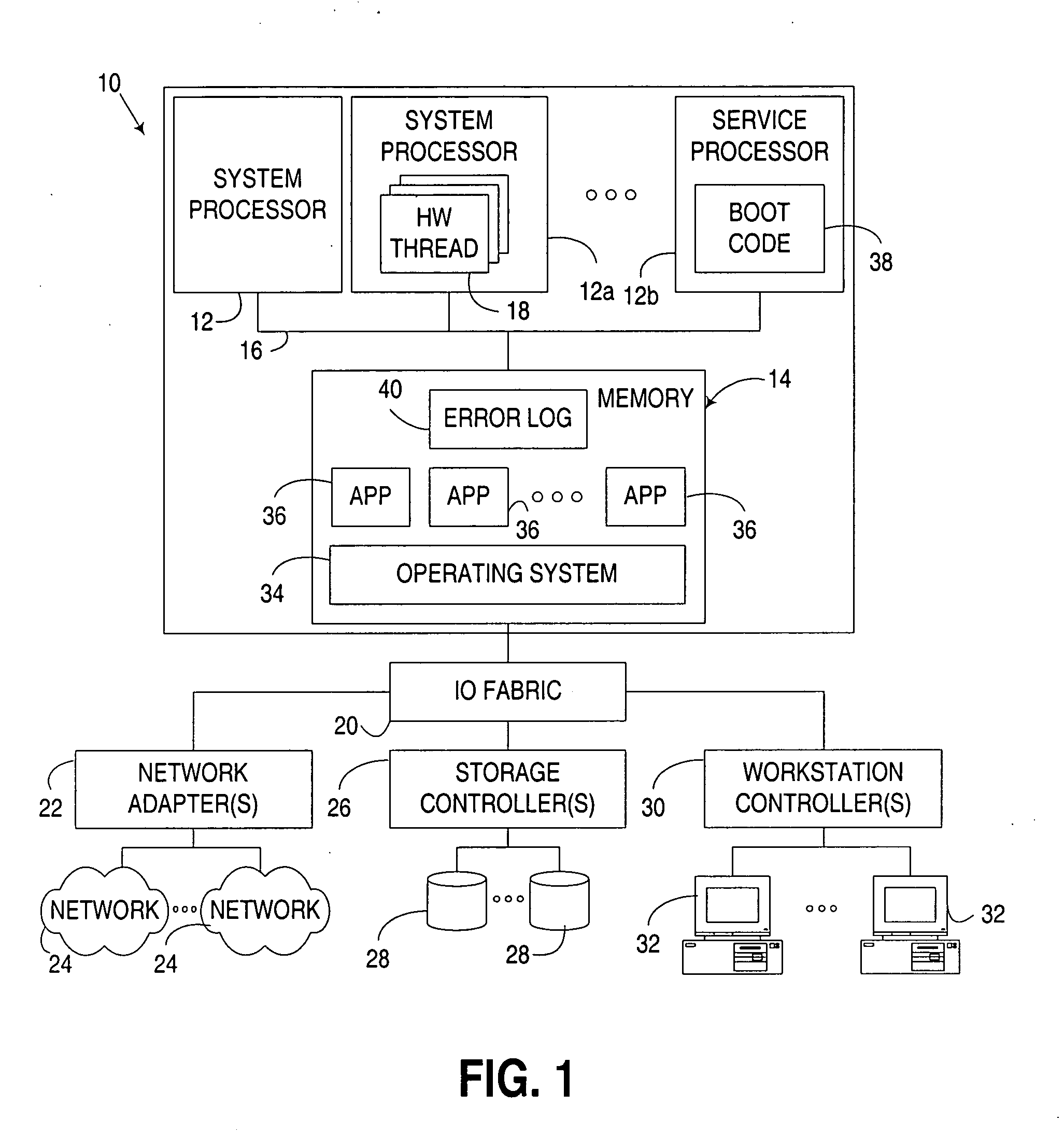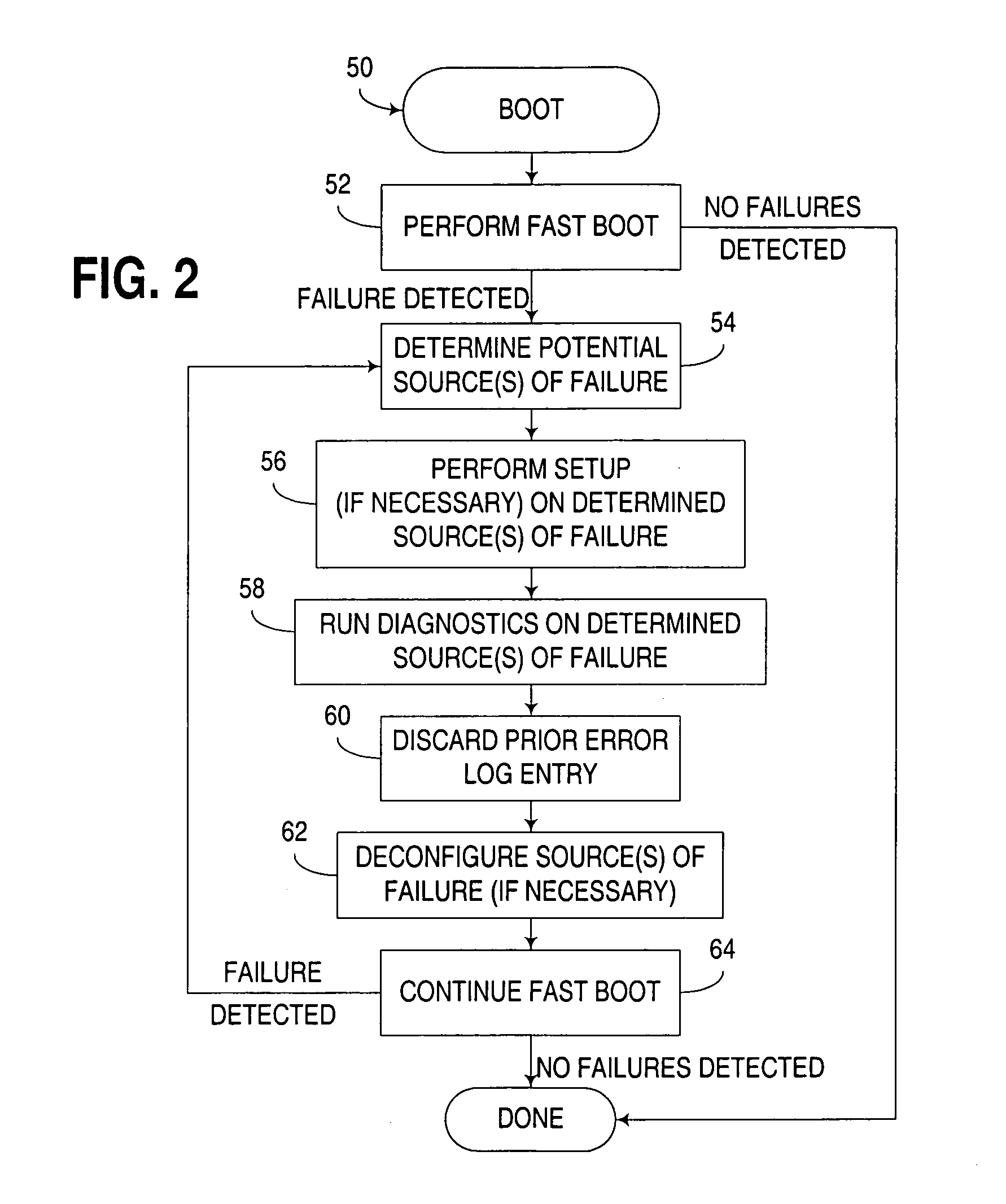Computer boot operation utilizing targeted boot diagnostics
a technology of targeted boot diagnostics and computer boot operations, applied in the field of computer and computer software, can solve the problems of inability to complete the initialization process in time, the boot operation may take several minutes, and the boot operation can take even longer, so as to eliminate the need for a reboot of the computer, the effect of reducing the overhead
- Summary
- Abstract
- Description
- Claims
- Application Information
AI Technical Summary
Benefits of technology
Problems solved by technology
Method used
Image
Examples
Embodiment Construction
[0018] The embodiments discussed hereinafter utilize targeted boot diagnostics to minimize boot time for a computer, even in instances where a failure is encountered during the boot process. In particular, in response to detection of a failure during a boot process, a targeted diagnostic operation is performed on one or more hardware devices, and the boot process is thereafter completed. Typically, the targeted diagnostic operation is performed only on those devices that are potential sources of the failure, and thus reduces the amount of diagnostics that would otherwise be performed in the case of a slow mode or other boot process during which full diagnostics are performed. Moreover, typically the detection of the failure, the initiation of the targeted diagnostic operation, and the resumption or completion of the boot process thereafter are performed without user intervention, and without the need for a reboot operation, thus enabling fast and automated recovery from a failure.
[...
PUM
 Login to View More
Login to View More Abstract
Description
Claims
Application Information
 Login to View More
Login to View More - R&D
- Intellectual Property
- Life Sciences
- Materials
- Tech Scout
- Unparalleled Data Quality
- Higher Quality Content
- 60% Fewer Hallucinations
Browse by: Latest US Patents, China's latest patents, Technical Efficacy Thesaurus, Application Domain, Technology Topic, Popular Technical Reports.
© 2025 PatSnap. All rights reserved.Legal|Privacy policy|Modern Slavery Act Transparency Statement|Sitemap|About US| Contact US: help@patsnap.com



